Dijon or Yellow Mustard: Which One Is Right?
Dijon mustard offers a robust, complex flavor profile that sets it apart in the culinary world.
This French condiment brings tanginess and sophistication to countless recipes beyond simple sandwiches.
Many chefs prefer its creamy texture and wine-infused character when creating upscale dishes.
The distinctive pale yellow hue comes from brown or black mustard seeds rather than the bright yellow variety.
Traditional preparation methods date back centuries, giving Dijon its revered status among food enthusiasts everywhere.
A subtle heat lingers on your palate after each taste, unlike the straightforward punch of other mustard varieties.
The Overview of Dijon Mustard
Dijon mustard, from Dijon in Burgundy, France, has been made since the Middle Ages but gained worldwide fame in the 19th century. Its main ingredients are brown mustard seeds, herbs, salt, and liquids like white wine, water, or vinegar.
Seeds can be whole grain for a coarser texture or finely ground. Originally, verjuice (unripe wine juice) was used but was later replaced by water, vinegar, and sometimes white wine.
Some recipes use black mustard seeds or a mix for added heat and aroma.
Common Uses of Dijon Mustard
The Overview of Yellow Mustard
Mustard has ancient roots in Africa and China, but yellow mustard - also called American mustard - has a shorter history. It was created by George French, who launched French’s Mustard in 1904.
Initially known as “cream salad mustard,” yellow mustard has become a staple of American cuisine. It’s found everywhere, from hot dogs and seafood to marinades and dipping sauces.
This mustard is made from ground yellow mustard seeds mixed with liquids like vinegar, beer, or wine, plus other spices. Turmeric is a key ingredient, giving it its distinctive bright yellow color.
Uses of Yellow Mustard
The Similarities Between Dijon and Yellow Mustard
Let's find out what dijon and yellow mustard share in common with these features.
Main Ingredients
Mustard is made from simple ingredients shared by both yellow and Dijon varieties, allowing some interchangeability. Both use mustard seeds; Dijon typically from brown seeds, sometimes with yellow mustard powder added for color, while yellow mustard primarily uses yellow seeds.
Liquids like water, vinegar, wine, beer, or ginger ale dilute the mustard, and salt is essential. Additional spices such as paprika, garlic powder, and allspice can enhance flavor.
Main Uses
Yellow and Dijon mustards are versatile and often interchangeable in recipes, generally used in a 1:1 ratio. Yellow mustard is classic on hot dogs, while Dijon shines in deviled eggs, but you can swap them without major flavor loss.
Since substitution isn’t exact, adjust taste as needed.
Health Benefits
Both mustards contain glucosinolates, which provide anti-inflammatory and antimicrobial effects but can be harmful in large amounts. They also offer antioxidants and minerals like zinc, manganese, and iron.
Store-bought versions may include sweeteners, raising calories and sugar, so check labels.
Dijon vs Yellow: What Set Them Apart
Mustard lovers often debate the key differences between Dijon and yellow varieties when choosing the perfect condiment.
Check the table for a quick comparison.
| Feature | Yellow Mustard | Dijon Mustard |
| Color | Bright, vibrant yellow due to turmeric and yellow mustard seeds. Stands out on any food. | Pale yellow to yellow-brown, depending on brown and sometimes yellow mustard seeds. Less vibrant. |
| Texture | More fluid, can be shaken or squeezed from bottles. Usually finely ground mustard seeds. | Creamy and thicker with lower liquid content. Available in whole grain (more popular) or finely ground forms. |
| Flavor | Milder, less complex with subtle tanginess and bitterness. Easier for first-time eaters. | Complex, intense, and sharp tartness with spicy notes. Made from brown or black mustard seeds, often mixed with vinegar and white wine. Whole grain version is more pungent. |
| Price & Availability | Widely available and inexpensive. | Harder to find authentic Dijon mustard as true products must be made in Dijon or France with local seeds. Usually more expensive. Most store-bought Dijon is imitation. |
Color
Yellow mustard has a bright, vivid yellow color thanks to turmeric and yellow mustard seeds, making it visually striking on any dish. In contrast, Dijon mustard ranges from pale yellow to a yellow-brown shade due to its use of brown and sometimes yellow mustard seeds, resulting in a more muted appearance.
Texture
Yellow mustard is fluid and easily squeezable from bottles, typically made from finely ground mustard seeds. Dijon mustard is thicker and creamier, with less liquid content, and is commonly available in whole grain or finely ground forms, the whole grain giving it a coarser texture.
Flavor
Yellow mustard offers a mild, simple flavor with gentle tanginess and bitterness, making it accessible for most palates. Dijon mustard is more complex and sharper, with a spicy bite from brown or black mustard seeds and a tangy acidity from added vinegar and white wine; whole grain Dijon packs an even stronger punch.
Price And Availability
Yellow mustard is widely available and inexpensive. Authentic Dijon mustard is pricier and less common because true Dijon must be made in Dijon, France, with local seeds.
Most Dijon sold outside France is imitation, which lacks the prestige and exact flavor of the original.
Tangy Dijon Alternatives That’ll Spice Up Any Dish
Many suitable replacements exist for Dijon mustard when it's missing from your shelf or simply doesn't match what you're craving. Each option brings unique qualities to your recipes while maintaining that essential mustardy foundation we all enjoy.
Stone Ground Mustard
Brown mustard seeds form the base of stone ground mustard, making it a great stand-in for Dijon. Creators crush these seeds with water and vinegar, often using millstones which gives this condiment its distinctive name and texture.
Despite having a stronger kick and tang than its French cousin, stone ground mustard works perfectly as a 1:1 replacement in your recipes. The rustic quality adds character to whatever dish you're preparing without needing to adjust measurements at all.
Honey Mustard
Honey mustard offers a pleasing sweetness that works beautifully with white meat, pork, and chicken dishes. Making it at home couldn't be easier - just combine Dijon or yellow mustard (or both) with mayo, honey, and your favorite spices.
The result is an irresistible blend that satisfies anyone with a sweet tooth while still delivering that classic mustard kick. Your sandwiches and dipping sauces will never be the same once you discover how this simple mixture enhances almost any meal.
English Mustard
English mustard packs a spicy punch that lands right between regular yellow and fancy Dijon types. Its sharp, powerful flavor adds excitement to everyday sandwiches and makes roasted meats taste even better.
Fish dishes come alive with just a small dab mixed in, while plain mashed potatoes transform into something special with a teaspoon stirred through. Many people love how this bold condiment cuts through fatty foods and brings out hidden flavors in their meals.
The heat level works perfectly when you need something stronger than mild yellow mustard but not quite as refined as Dijon varieties.
German Mustard
German mustard stands out with its textured blend of various mustard seeds and packs more heat than Dijon. Many people enjoy its hearty spice level which makes it ideal for pairing with meats, sausages, hot dogs, and fresh baked pretzels.
Unlike smoother mustards, this robust option doesn't work well in salad dressings or marinades where you need something that blends more easily. The unique grainy consistency and bold flavor profile create a satisfying condiment experience that enhances simple dishes with minimal effort.
Spicy Brown Mustard
Brown mustard seeds combine with a mix of spices to form this robust condiment that packs more punch than Dijon. The flavor profile is much deeper and more intense, making it necessary to use a smaller amount when swapping it in recipes.
For best results, start with less than a one-to-one replacement ratio and adjust according to your taste preferences. The extra kick means a little goes a long way in sandwiches, dressings, or marinades where Dijon would typically be called for.
Wasabi
Wasabi, known as Japanese horseradish, comes straight from Japan and packs an intense heat that can take your taste buds by surprise. When using it as a Dijon mustard substitute, remember that a small amount goes much further than expected.
Just mix the powder with enough water to create the right consistency, and your dish will have that special kick without overwhelming the other flavors.
Mayonnaise
Mayonnaise works as a flexible replacement for sauces and dressings beyond just Dijon mustard, thanks to its subtle tang and smooth consistency. People who enjoy its mild flavor can spread it on burgers, dunk French fries in it, or pair it with BBQ meats and salads without worry.
Unlike complex mustard varieties, mayo has a simple taste profile that goes with almost anything on your plate. For extra zip, try mixing it with ketchup or chili sauce to create custom flavors that match your meal perfectly.
Got Questions? We’ve Got Solutions
1. When should I use dijon mustard instead of yellow mustard?
Use dijon mustard in vinaigrettes, creamy sauces, and with stronger flavored meats like beef or lamb. Yellow mustard works better for classic American dishes like hot dogs, hamburgers, and potato salad.
2. Is dijon mustard spicier than yellow mustard?
Yes, dijon mustard has a more complex, sharper flavor with moderate heat. Yellow mustard is milder, tangier, and less spicy overall, making it more kid-friendly.
3. Can I substitute one for the other in recipes?
You can substitute them, but expect flavor changes. Replacing yellow with dijon adds sophistication and heat. Substituting dijon with yellow creates a milder, more tangy result.
4. Do they have different shelf lives?
Both mustards last about 1-2 years unopened. Once opened, yellow mustard stays good for up to a year in the refrigerator, while dijon typically maintains quality for 6-8 months when refrigerated.

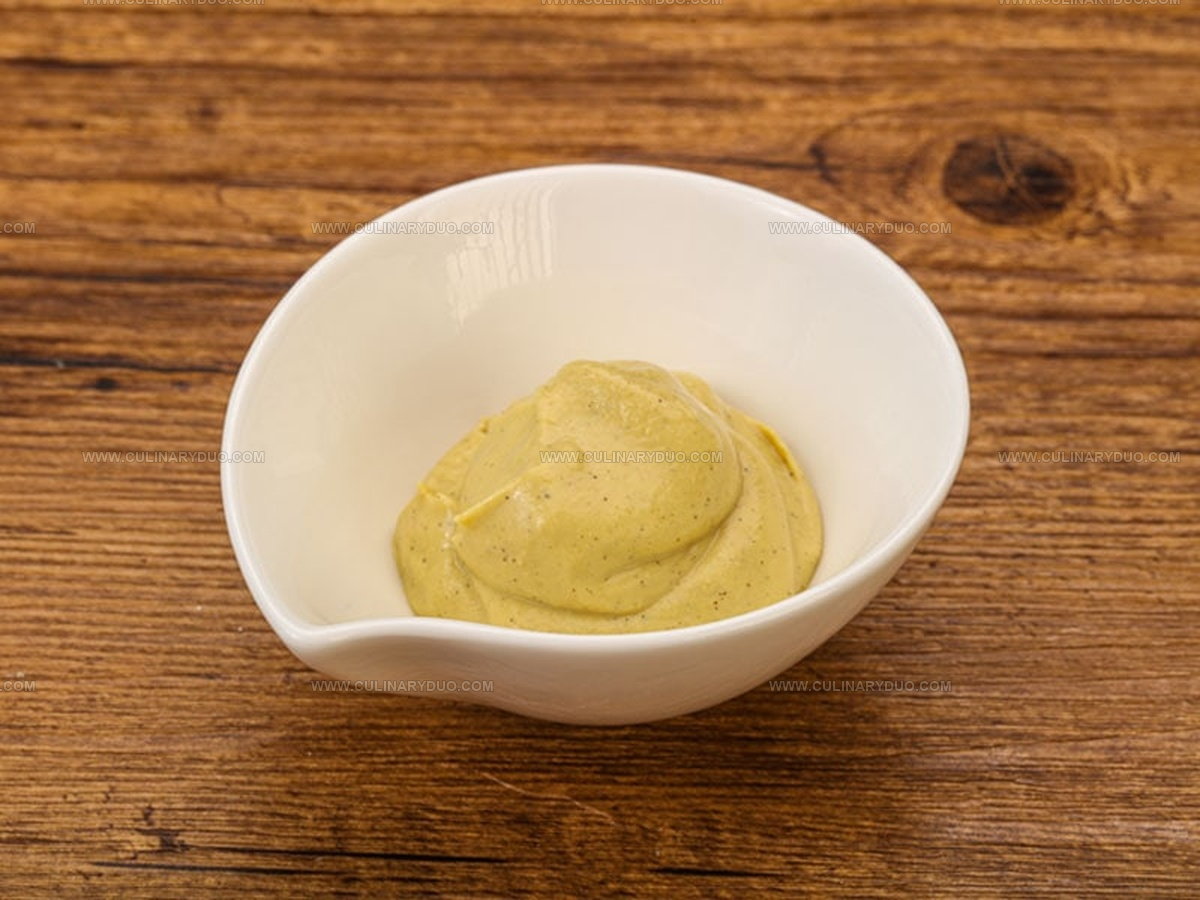
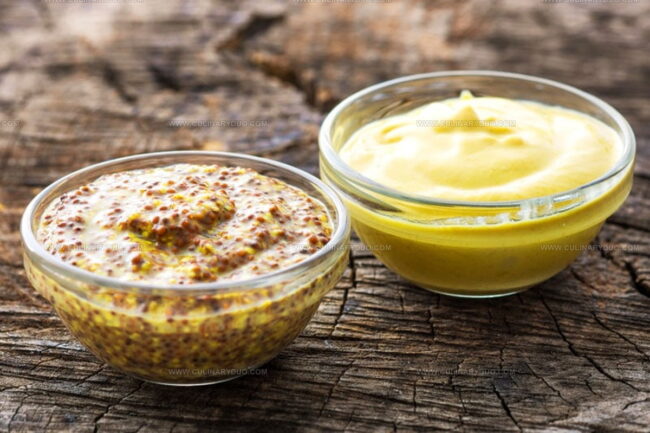
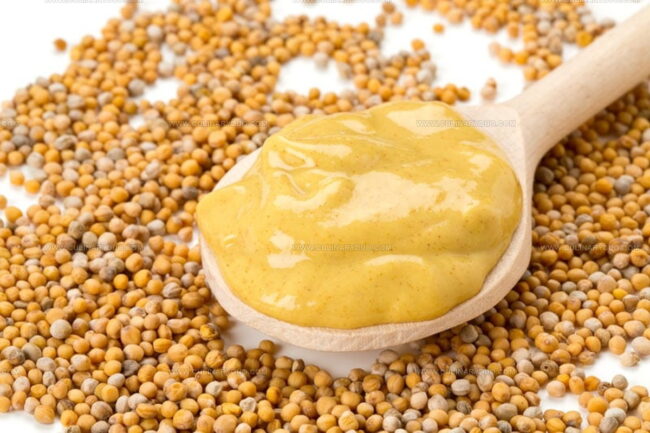

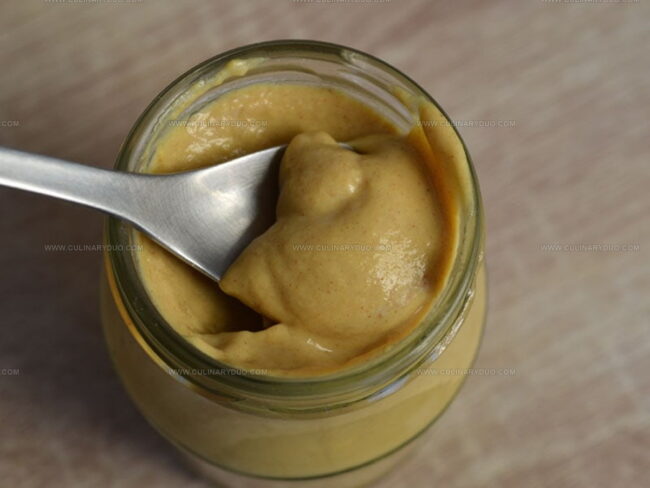
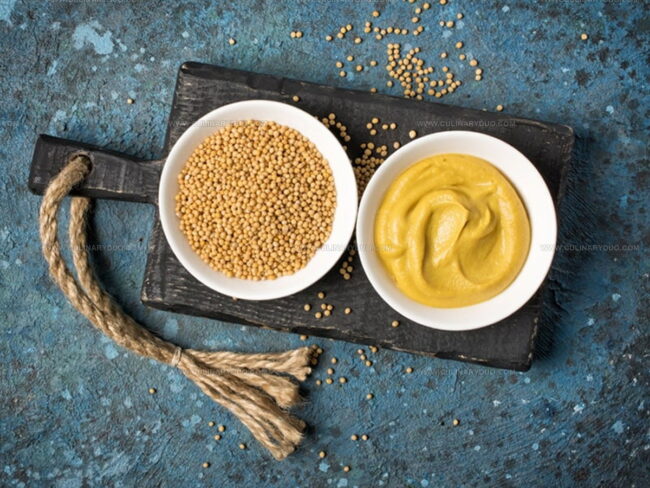
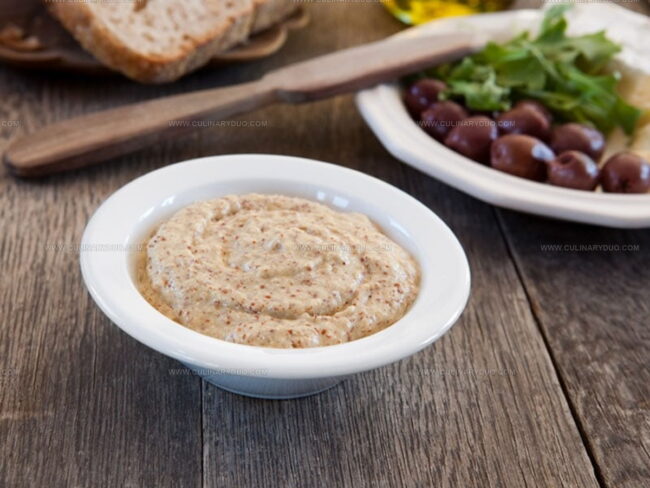
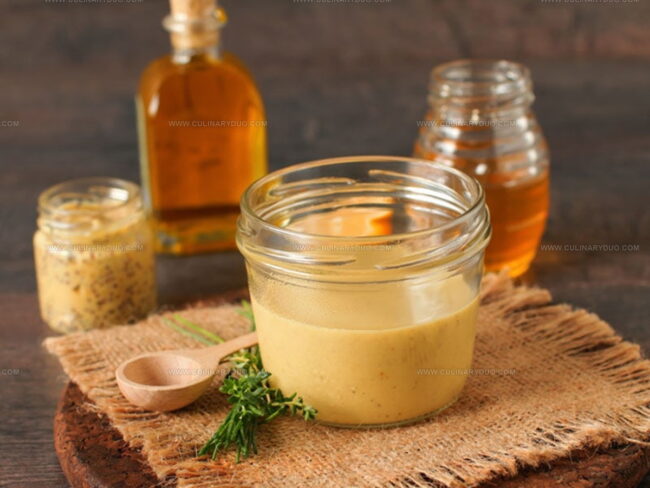
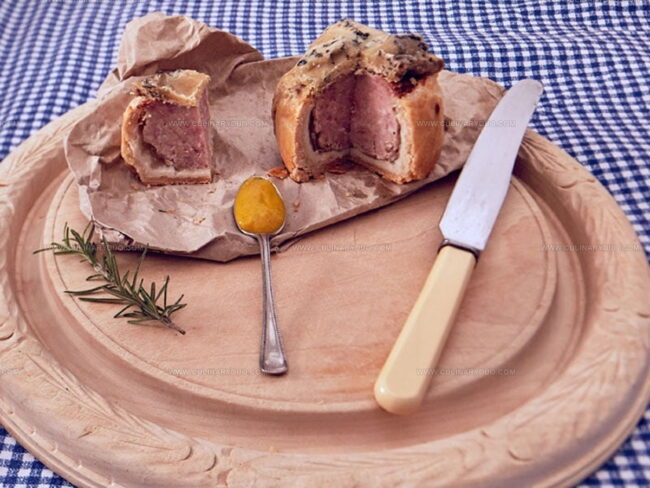

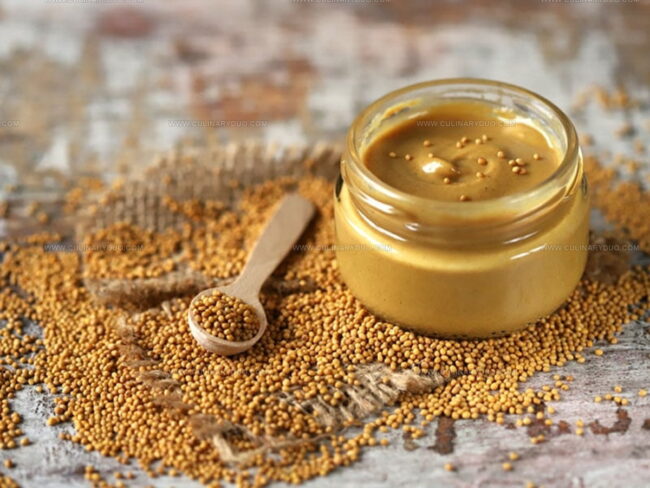
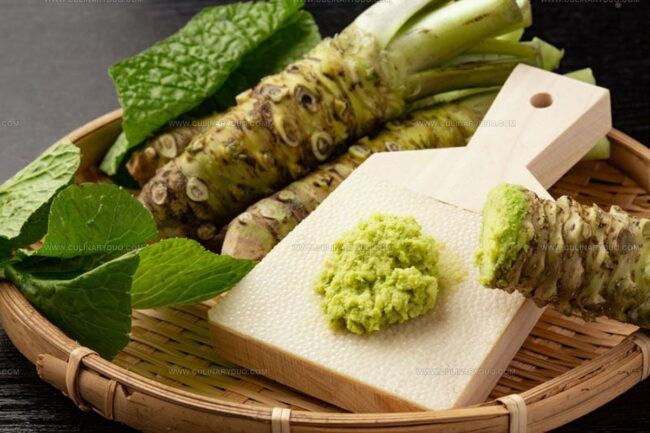
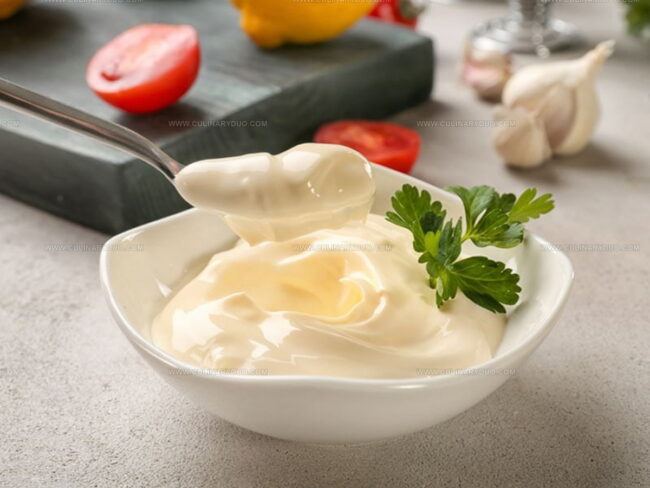
Natalie Brooks
Co-Founder & Content Strategist
Expertise
Education
eCornell
Natalie brings the vibrant, plant-powered side to Culinary Duo. After earning her Plant-Based Nutrition Certificate from eCornell, she combined her love for fresh ingredients with a passion for storytelling, aiming to make healthy cooking simple and satisfying.
Her kitchen motto: good food doesn’t need a fancy label, it just needs fresh ideas and a little creativity. Outside of writing and recipe testing, Natalie’s happiest in her garden, exploring farmers’ markets, or mixing global flavors into new kitchen experiments.